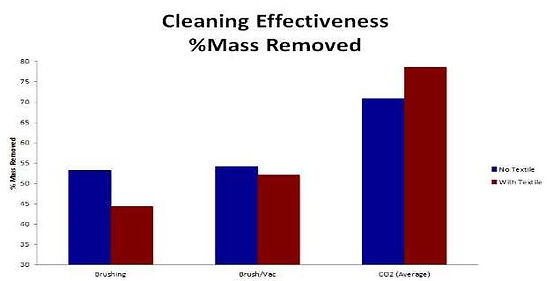Examples for Art and Artifact Cleaning
Four Examples are below
1- Polishing Residue Removal
2- Wax Removal
3- Dirt Removal
4- Soot Removal
5- Facial Grease and Fingerprint Removal
6- Hugh Shockey on R. Morris's "Model"
7- Nancy Odegaard cleaning woven baskets
Example 1 - Polishing Residue Removal - Polishing residue removal from a brass candlestick. The image on the left was typical before cleaning. The image on the right was typical after cleaning. Cleaning was less than 3 seconds with a high flow nozzle and we only focused on the grooves. A hot air gun was used to minimize moisture condensation. This example is shown with permission from the Biltmore’s Conservation Department. Images can be magnified. We have other examples.
Typical before CO2 cleaning

Typical after CO2 cleaning

Example 2 - Wax Removal - Wax removal from the same candlestick. The image on the left was typical of the wax before cleaning. The image on the right was typical after cleaning. We used a hot air gun to melt the wax, and then blew it away totally. Cleaning was within 5 seconds for that area. The brass candlestick is shown with permission of the Biltmore Estate Conservation Department.
Typical before CO2 cleaning

Typical after CO2 cleaning

The next example was done with a hair dryer without melting the wax. Same areas are shown before and after CO2 cleaning, note the Sharpie mark. Cleaning was in seconds.
Before CO2 cleaning
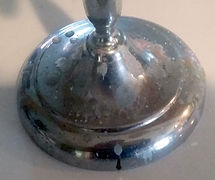
After CO2 cleaning
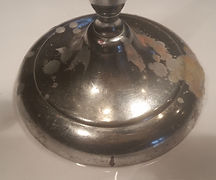
Example 3 - Dirt Removal - These plastic fake food items were partially cleaned with CO2 snow. A hot air gun was used to keep away moisture condensation. The center area was cleaned well in one pass, less than 3 seconds. The outside areas need more work. This example is shown with permission from the Biltmore’s Conservation Department
Before CO2 cleaning


After CO2 cleaning
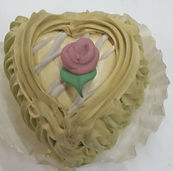

Example 4 - Soot Removal - This glass was exposed to a candle flame leading to soot deposits. With a hot air gun aimed at the glass, soot was removed within seconds, and no moisture seen. Even with these images, soot removal requires care and attention to any moisture condensation. Images can be magnified.
Before CO2 cleaning

After CO2 cleaning

This Bavarian beer mug was exposed to a flame from a candle and both wax and soot were deposited. Cleaning was slower than above due to the wax and the heavy deposit. Still, total cleaning time was under one minute.
Before CO2 cleaning

After CO2 cleaning

The above examples were done with a hot air gun aimed at the surface. it is pivotal to prevent moisture condensation when removing soot, else, the soot may stay. If moisture interferes, and the soot remains, it will require drying the surface totally and trying again. Porous wooden surfaces are challenging. We have additional samples to highlight the process.
Example 5 - Facial Grease A plate galss sample had facial grease smeared all over its surface and we marked an 'x' on the surface. Half the sample was cleaned using a hot air source and CO2 gas feed.
Before CO2 cleaning
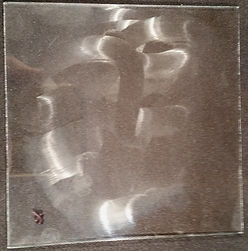
After CO2 cleaning

Fingerprint Removal - Note the five fingerprints on the glass surface before cleaning above the 'X'. CO2 snow cleaning removed the middle fingerprints
Before CO2 cleaning

After CO2 cleaning
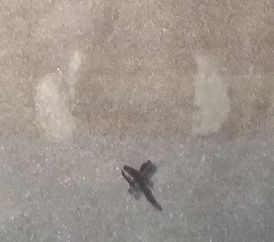
Example 6 - Hugh Shockey on R. Morris's "Model" This polymer sculpture had an unknown haze on its surface as shown in the 'Before' image below. CO2 snow cleaning removed the haze, which was likely an unknown organic as shown in the 'after' image. Images can be magnified.
Before CO2 cleaning

After CO2 cleaning
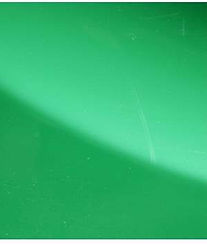
Example 7 - Cleaning Woven Baskets - The image on the left shows the samples Nancy Odegaard tested CO2 snow cleaning to characterize dust and dirt removal. The table below shows the relative percentages of dirt removed for brushing, brushing and vacuuming, and CO2 snow cleaning for both woven baskets with and without textiles. The bottom image presents the data as a bar graph. Overall, CO2 snow cleaning removed from 30 to 50% more dirt in the same time than brushing or brushing and vacuuming. Images can be magnified.
